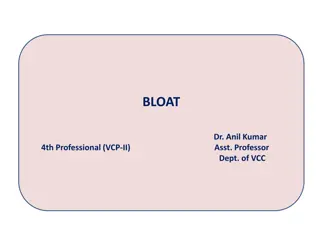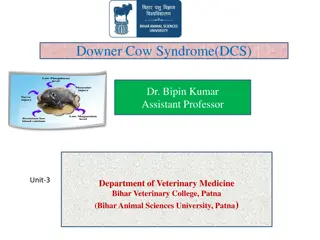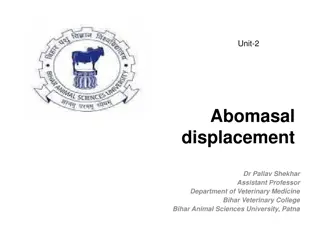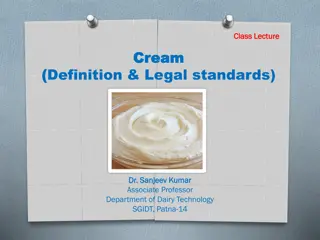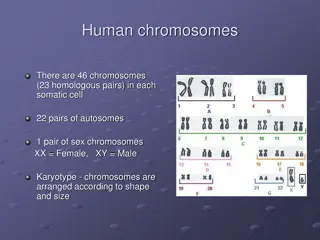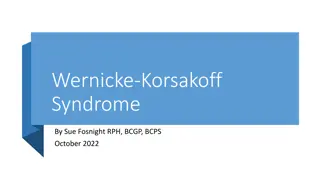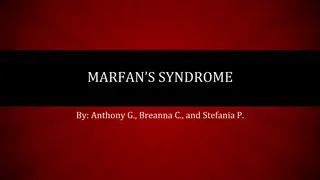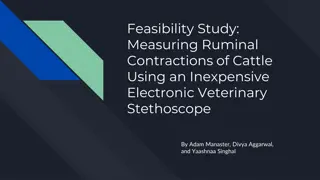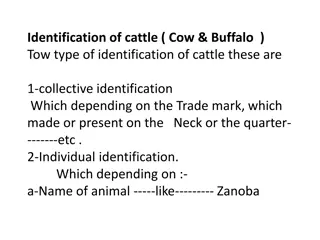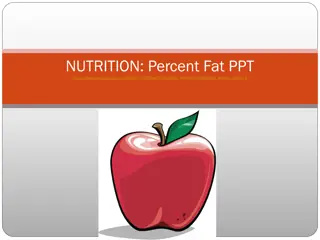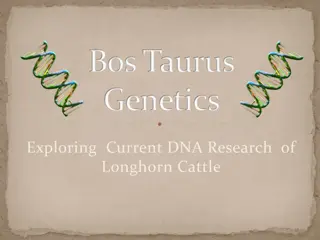Understanding Fat Cow Syndrome in Cattle: Causes, Symptoms, and Treatment
Fat Cow Syndrome, also known as Fatty Liver Disease in Cattle, is a condition commonly seen in high-producing cows during the transition period around calving. The disease is characterized by mobilization of excessive body fat to the liver due to negative energy balance, leading to hepatic lipidosis. Clinical signs include anorexia, depression, weakness, and ketosis. Diagnosis involves detecting elevated NEFA and ketone bodies. Treatment includes glucose supplementation, insulin therapy, choline chloride administration, and niacin supplementation to reduce hepatic lipidosis.
Download Presentation

Please find below an Image/Link to download the presentation.
The content on the website is provided AS IS for your information and personal use only. It may not be sold, licensed, or shared on other websites without obtaining consent from the author. Download presentation by click this link. If you encounter any issues during the download, it is possible that the publisher has removed the file from their server.
E N D
Presentation Transcript
Fat Cow Syndrome UNIT-3 Dr. Vivek Kr. Singh Assistant Professor Department of Veterinary Clinical Complex
Synonyms FATTY LIVER IN CATTLE FAT-MOBILIZATION SYNDROME HEPATIC LIPIDOSIS PREGNANCY TOXEMIA IN CATTLE
Introduction It is a disease of high producing cows Overfed cattle during dry period may develop fatty liver syndrome just before or after calving (Transition period)
Etiology Etiology Mobilization of excessive body fat to liver during periods of negative energy balance at time of parturition or in early lactation of dairy cows and late pregnancy of beef cows
Pathogenesis Increase energy demands + Reduced feed intake Negative Energy Balance Mobilization of fat from reserve Fat is transported to liver for gluconeogenesis Ruminant liver has limited capacity to transport VLDL Hepatic Lipidosis
Clinical findings Anorexia Depression Weakness Persistent weight loss Recombency Ketosis (Do not respond to glucose treatment) Some animals show nervous signs like star gazing and tremors of head and neck Coma and death
Necropsy Findings Gross enlargement of liver Liver is pale yellow in color Greasy and friable Histopathology reveals Enlarged hepatocytes with fatty changes
Diagnosis Elevated NEFA Ketone bodies Eleveted LDH Tatal bilirubin AST GGT The liver sample which floats in water and copper sulphate solution having sp. Gravity ranging between 1.025 1.055 indicates presence of 34% lipid content in the sample
Treatment Continuous supplementation of glucose along with calcium and magnesium salt to correct negative energy balance Long acting protamine zinc insuline @ 200 units/ cow every 12 hrly S/c administration of choline chloride (25 g in 250 ml NSS) Niacin@ 6-12g/cow/day helps in reducing hepatic lipidosis Antioxidants Anabolic steroids @300mg/cow



